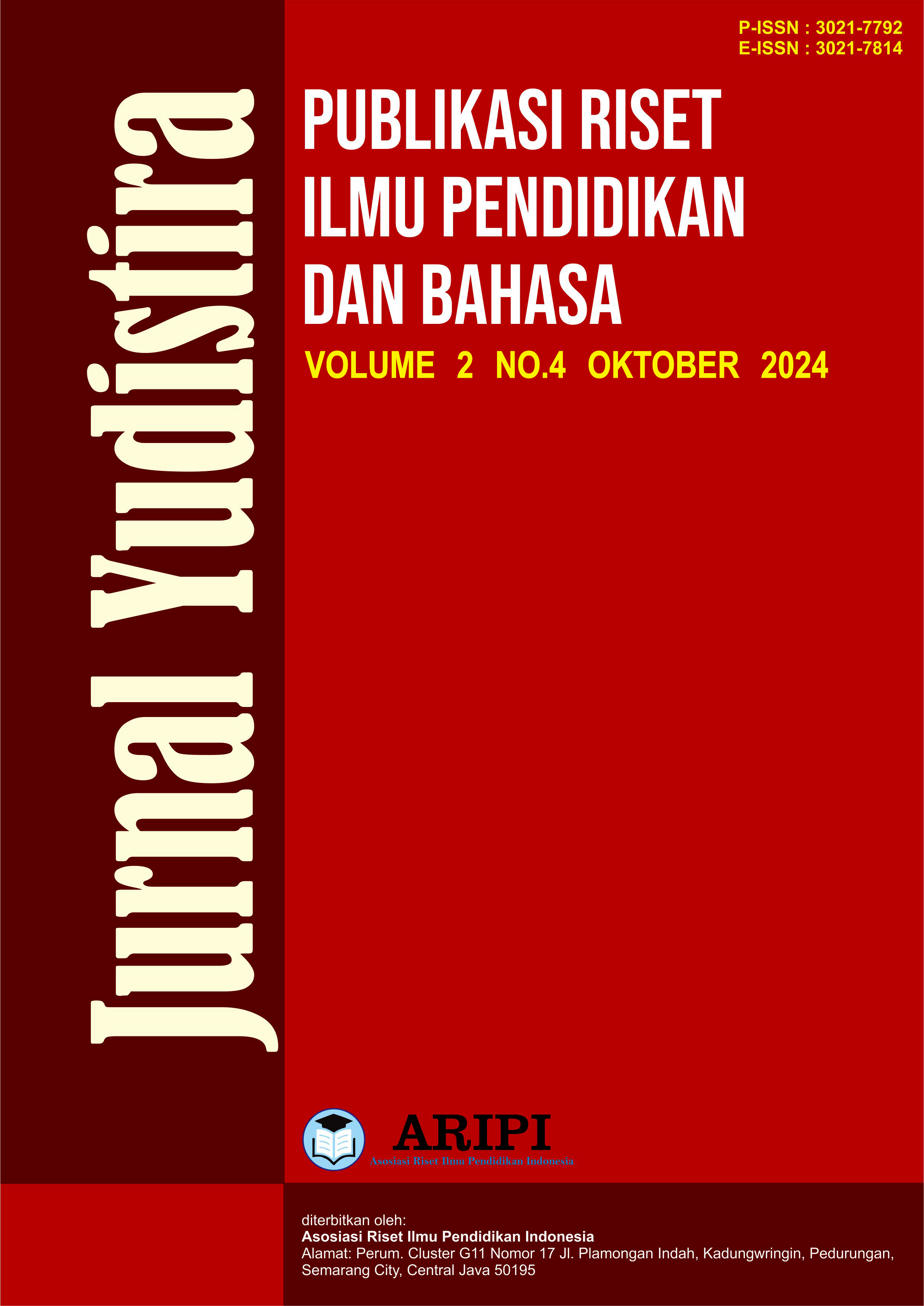Teaching Reading Comprehension of Explanatory Text by Using Directed Reading and Thinking Activity (DRTA)
DOI:
https://doi.org/10.61132/yudistira.v2i4.1170Keywords:
Action research, DRTA, reading comprehensionAbstract
This research aims to improve the reading skills of fifth grade students of SDN Warnasari using Directed Reading and Thinking Activities as a learning method in English subjects. This reserach used classroom action research and conducted in three cycles. Methods used to collect data include documentation, observation, and test. The increase in students' reading comprehension can be seen from classical completeness which shows that from one cycle to the next, classical completeness scores increased from 58% in cycle I to 84% in cycle II and increased to 100% in cycle III. The average student score in cycles I and II also increased, from 76.4 in cycle I to 82.10 in cycle II and 86.31 in cycle III. The conclusion is the application of the Directed Reading and Thinking Activity method can improve students' reading skills in English subjects in class V at SDN Warnasari for the 2023/2024 academic year.
Downloads
References
Arif Sari Çoban, A. (2010). Teaching problematic consonants in English to young learners. Procedia Social and Behavioral Sciences, 2, 943. Turkey: Elsevier Ltd.
Connie Eilar Renn, W. (2013). The effects of the directed reading thinking activity on second grade reading comprehension. Allendale: Graduate Research and Creative Practice.
Erliana, S. (2011). Improving reading comprehension through directed reading-thinking activity (DRTA) strategy. Journal on English as a Foreign Language, 1(1), 49-57.
Guilford, C. B. (2008). Reading comprehension strategies for independent learners. New York: The Guilford Press.
Khomariah, N. (2013). Skripsi: Peningkatan keterampilan membaca pemahaman melalui strategi directed reading thinking activity (DRTA) pada siswa kelas V SDN Karanganyar 01 Kota Semarang. Semarang: UNS.
Linda Septiyana, A. S. (2021). The correlation between EFL learners' cohesion and their reading comprehension. Journal of Research on Language Education (JoRLE), 2(1), 68-74.
Lubis, Y. W. (2024). Pembentukan karakter unggul: Analisis optimalisasi pendidikan melalui organisasi siswa intra madrasah (OSIM) di MAN 2 Deli Serdang. Bersatu: Jurnal Pendidikan Bhinneka Tunggal Ika, 2(1), 274-282. https://doi.org/10.51903/bersatu.v2i1.554
Lubis, Y., & Ritonga, A. (2023). Mobilization school program: Implementation of Islamic religious education teacher preparation in elementary schools. Jurnal At-Tarbiyat: Jurnal Pendidikan Islam, 6(1). https://doi.org/10.37758/jat.v6i1.632
Paizaluddin, M., & Misbahuddin. (2016). Penelitian tindakan kelas (Classroom action research) panduan teoritis dan praktis. Bandung: Alfabeta.
Philips, S. (1993). Young learners. Bristol, UK: Oxford University Press.
Pinter, A. (2017). Teaching young language learners. Britain: Oxford University Press.
Ritonga, A. A., Lubis, Y. W., Masitha, S., & Harahap, C. P. (2022). Program sekolah penggerak sebagai inovasi meningkatkan kualitas pendidikan di SD Negeri 104267 Pegajahan. Jurnal Pendidikan, 31(2), 195–206. https://doi.org/10.32585/jp.v31i2.2637
Walker, B. J. (2012). Diagnostic teaching of reading. Boston: Pearson Education.
Downloads
Published
How to Cite
Issue
Section
License
Copyright (c) 2024 Jurnal Yudistira : Publikasi Riset Ilmu Pendidikan dan Bahasa

This work is licensed under a Creative Commons Attribution-ShareAlike 4.0 International License.






